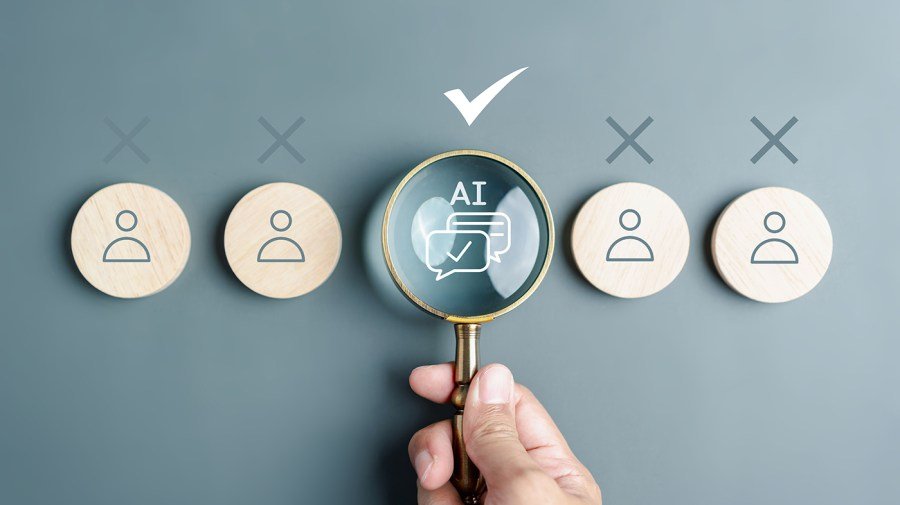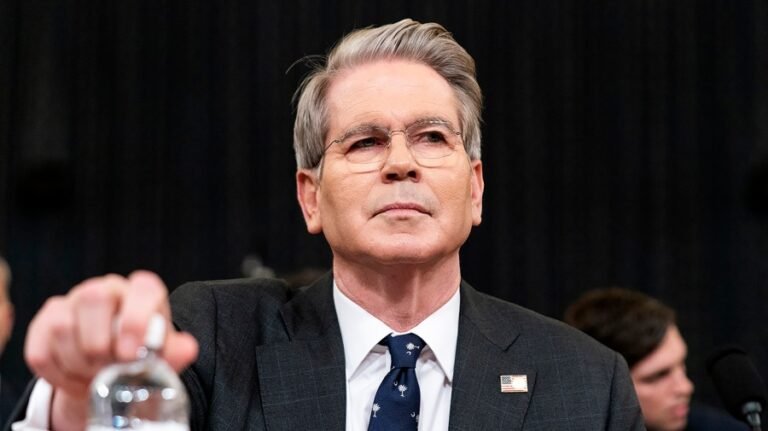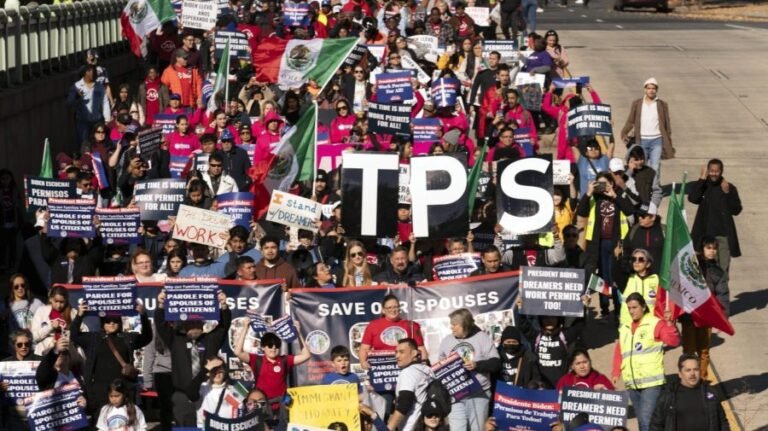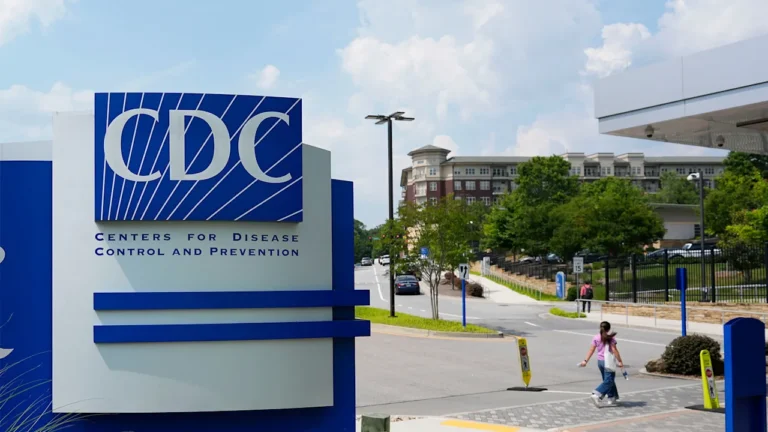
Business leaders have offered dire warnings in recent months about the turmoil artificial intelligence (AI) could unleash on the job market, predicting widespread worker displacement and mass unemployment.
Experts say the picture is still unclear, with the full impact of the technology yet to be realized.
Here’s what to know about how AI could change the labor market:
What are business leaders saying?
The predictions of leading executives on the impact of AI have varied wildly since the technology first took the world by storm in late 2022, with the public release of OpenAI’s ChatGPT.
Anthropic CEO Dario Amodei warned in an interview with Axios in May that AI could wipe out half of entry-level white-collar jobs, resulting in unemployment rates of 10 to 20 percent within five years.
In a note to employees in June, Amazon CEO Andy Jassy said he anticipates that AI will reduce the e-commerce giant’s corporate workforce and “change the way our work is done.”
“We will need fewer people doing some of the jobs that are being done today, and more people doing other types of jobs,” he said.
“It’s hard to know exactly where this nets out over time, but in the next few years, we expect that this will reduce our total corporate workforce as we get efficiency gains from using AI extensively across the company.”
The International Monetary Fund (IMF) has also warned of a “painful transition” as AI pushes “large swaths” of people out of work for extended periods.
However, others are a bit more skeptical about claims of dramatic job losses and disruption.
“The hard part about this is, I think it will happen faster than previous technological changes,” OpenAI CEO Sam Atman said on The New York Times “Hard Fork” podcast in June. “But I think the new jobs will be better, and people will have better stuff.”
“And the take that half the jobs are going to be gone in a year or two years or five years or whatever, I think that’s not how society really works,” he added.
Nvidia CEO Jensen Huang similarly acknowledged there would be some upheaval but painted a more optimistic picture of the labor market.
“Every job will be affected,” he said in May. “Some jobs will be lost, some jobs will be created, but every job will be affected. You’re not going to lose your job to AI. You’re going to lose your job to someone who uses AI.”
What’s happening now?
For all the forecasting about AI, the impact isn’t showing up in the data quite yet, experts told The Hill.
“We are still very much in the early days of AI,” said Daniel Zhao, chief economist at Glassdoor. “It does seem like every business is experimenting with AI, but there is still a lot of work to be done before it’s actually fully integrated into business processes and is really realizing potential that business leaders are seeing.”
A recent analysis from the Economic Innovation Group found no meaningful impacts from AI on the labor market across several different measures.
The most AI-exposed workers, such as financial examiners, actuaries and budget analysts, saw a slight uptick in unemployment. However, the jobless rate of the least exposed workers rose faster, the analysis found.
The data also fails to show that AI-exposed employees are less likely to retire than their peers. They have long moved jobs at a faster pace than other workers, a trend that has not shown any major uptick in recent years with the emergence of public-facing AI tools. Nor have AI-exposed workers moved into less exposed roles, according to the analysis.
There’s little impact registering at the firm level either, as companies with more exposed workers maintain higher rates of employment than their counterparts. And young workers and recent college graduates are seeing an uptick in unemployment across the board, no matter how exposed their jobs are to AI.
“it’s just not there,” said Nathan Goldschlag, director of research at the Economic Innovation Group who co-authored the analysis. “That’s not to say it won’t be right. It’s just we can’t, it’s very hard to justify the claim that AI right now is totally, fundamentally reordering the labor market.”
Martha Gimbel, executive director and co-founder of The Budget Lab at Yale University, similarly underscored that AI is simply not registering in labor data yet.
“There’s no sign,” she told The Hill. “It is a flat line until kingdom come. If you were at a hospital and you saw that line, you’d go, ‘That patient is dead.’”
Companies have increasingly pointed to AI as they make job cuts, although some experts are skeptical. More than 10,000 layoffs in July cited AI, according to a recent report from the employment agency Challenger, Gray & Christmas.
“I think it’s really important to look in the data, right?” Gimbel said. “That’s for a couple of reasons, not least of which is there’s no social returns right to saying, ‘We over hired, and we need to let a lot of people go.’”
“There are greater social returns to saying, ‘Oh, well, we’ve done all of this investment in AI, and we’re incredibly productive, and so we don’t need to hire as much moving forward,’” she added. “Both things may be true, one thing may be true, but it’s much better to look at what is literally happening, as opposed to relying on what people are saying about it.”
What comes next?
While AI isn’t upending the job market quite yet, it may eventually make its presence known, especially as companies throw billions of dollars into developing the technology as rapidly as possible.
“The rate of improvement of AI has been incredible,” Zhao said. “And so, any prediction about how it’s going to impact the job market has to recognize that we don’t know exactly how good AI will be two, three, four, five years from now.”
“That being said, I do think that AI has the potential to change how we work pretty fundamentally,” he added.
Rather than taking full jobs, AI could take over certain tasks and reshape these roles, said Stephan Meier, chair of the management division at Columbia Business School.
“It’s not as simple as robot take over jobs, but it definitely will be a shift in the kind of work people do, and as a result, it will change jobs,” he said.
This change will likely depend on how AI tools progress and get integrated into production technologies, a process that may go slower than some people expect, Goldschlag noted.
He pointed to the expanding role of electricity in the manufacturing sector in the early 1900s, emphasizing it took time to reorganize the factory floor to integrate the new technology effectively.
“It takes a long time for firms to ingest those things, find ways to make them productive,” he said.
While Gimbel suggested the current period of technological change could happen much faster than previous periods, she emphasized that it won’t be “instantaneous.”
“If you invented super intelligence tomorrow, would every company adopt it immediately tomorrow and then fire all of their employees? No, right? It’s just not the way companies in the labor market work,” she said.
Other labor market forces may also counteract the impacts of AI, even as it begins to make waves.
“You’ve got to remember that when labor gets displaced, there’s forces in the economy and prices that help reallocate that labor,” Goldschlag added. “It’s not a static problem. It’s a very dynamic problem.”





